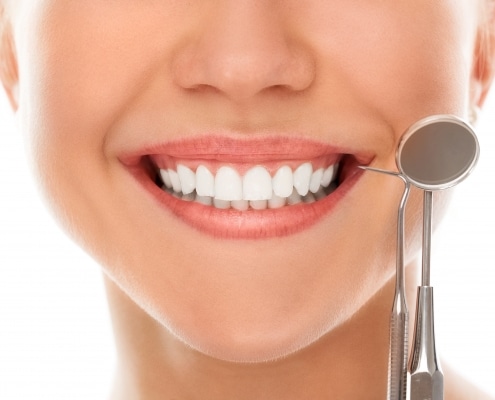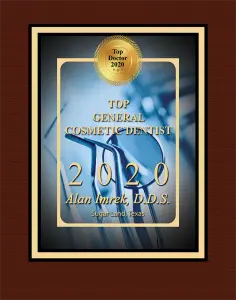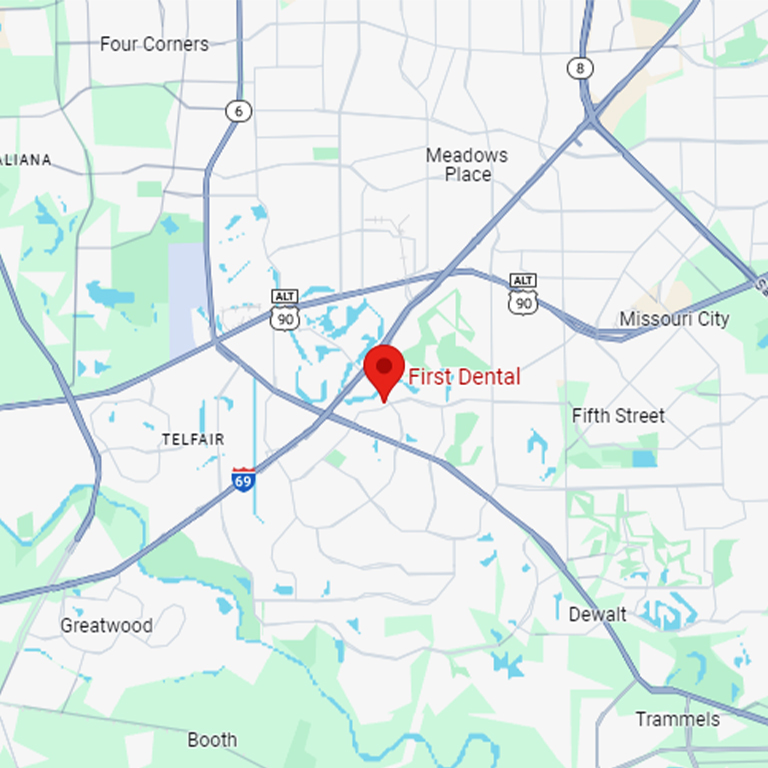What Causes a Receding Gum Line?
Gingival tissue (aka gum tissue) is designed to support and protect the roots of the teeth. However, when gum recession occurs, these protective tissues start wearing away and retracting. As the gum line retracts, it gradually exposes the roots of the teeth. Once the roots are exposed, they are no longer being protected from the bacteria and plaque. As time passes, periodontal pockets form in between the teeth and the gingival tissue. These pockets provide bacteria a place to thrive while they attack the teeth and gums. Unless treatment is sought soon, tooth loss is likely.
Are There Any Risk Factors Associated with Developing a Receding Gum Line?
Yes, there are factors that can increase the likelihood of an individual developing a receding gum line.
Some of these risk factors are:
- Having diabetes.
- Hormonal changes (e.g., pregnancy, puberty and menopause).
- Being older than 65.
- Jaw clenching/Teeth grinding.
- Piercings on the tongue and/or the lip.
- A misaligned bite/crooked teeth.
Potential Causes of a Receding Gum Line
Some of the factors leading up to gum recession are beyond an individual’s control, however, there are other factors that can be addressed to prevent or to slow the progression of a receding gum line.
Potential causes:
Using Tobacco Products
People who smoke or chew tobacco are more likely to develop a receding gum line. Tobacco use leads to the buildup of a sticky film (i.e., plaque) on the teeth. This plaque can be difficult to remove and, if it is left to harden into calculus (aka tartar), it can only be removed by a dental professional. When tartar is left to build up, gum recession can result.
Brushing Technique and/or the Use of a Hard-Bristled Toothbrush
While brushing, circular strokes should be used. In addition, soft-bristled toothbrushes are recommended because the hard-bristled brushes can actually wear away tooth enamel, which increases the likelihood of cavity development.
Poor Oral Hygiene
Neglecting to brush and floss daily results in a buildup of plaque and tartar: This buildup provides the bacteria with plenty of sustenance, allowing them to multiply and reside comfortably.
Genetics
Some people have a higher risk of developing receding gums because of their genetic disposition When other family members have experienced gum recession, it is a good idea to let Dr. Alan Imrek know so he can be vigilant and watch for any changes that indicate a receding gum line may be developing.
Gingivitis – Periodontitis
This is actually the main reason that gum recession occurs. When an individual has gingivitis, the bacteria in the mouth are destroying the gingival tissue. Left untreated, the gingivitis progresses to periodontitis. Once this progression occurs, both the teeth and the gingival tissue may sustain damage.
Recognizing a Receding Gum Line
Since the onset of a receding gum line is gradual, many people do not realize that their gums are receding until the disease has progressed quite a bit. However, if symptoms are evident, contacting First Dental at 281-494-3368 right away to schedule an appointment is vital to the health of your teeth and gums.
Signs of a receding gum line include:
- Bleeding while flossing and/or brushing.
- Tooth sensitivity.
- Pain at and around the gum line.
- Teeth appear longer.
- Loose teeth.
- Exposed roots.
- Red, irritated gingival tissue.
If any signs of gingivitis are present, you need to contact Dr. Alan Imrek’s office right away at 281-494-3368, otherwise, the gingivitis may progress to periodontitis.







Leave a Reply
Want to join the discussion?Feel free to contribute!